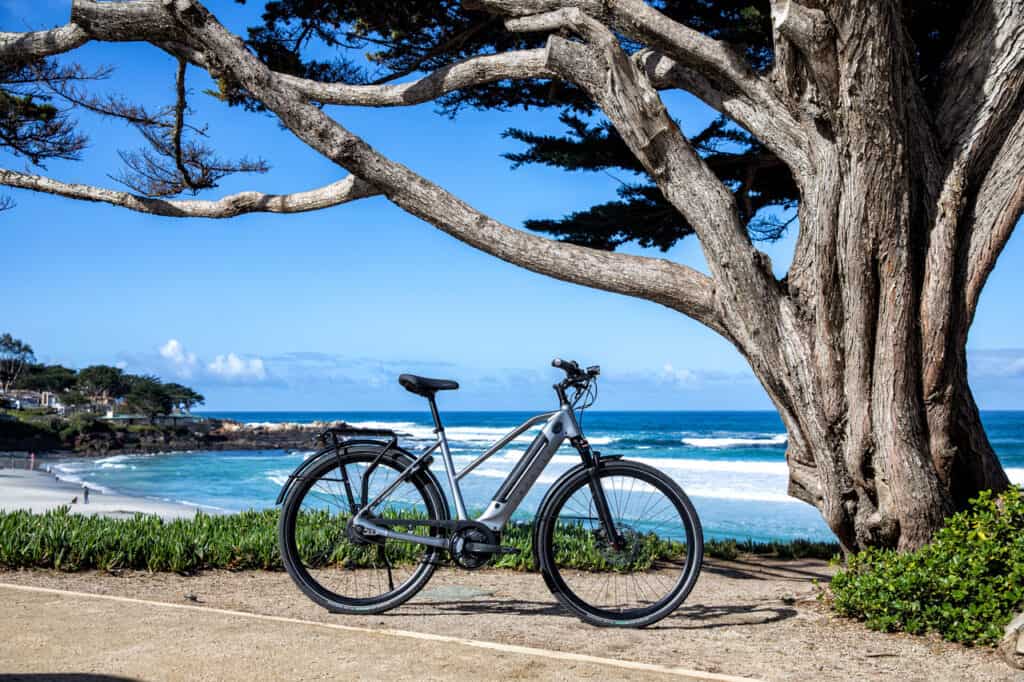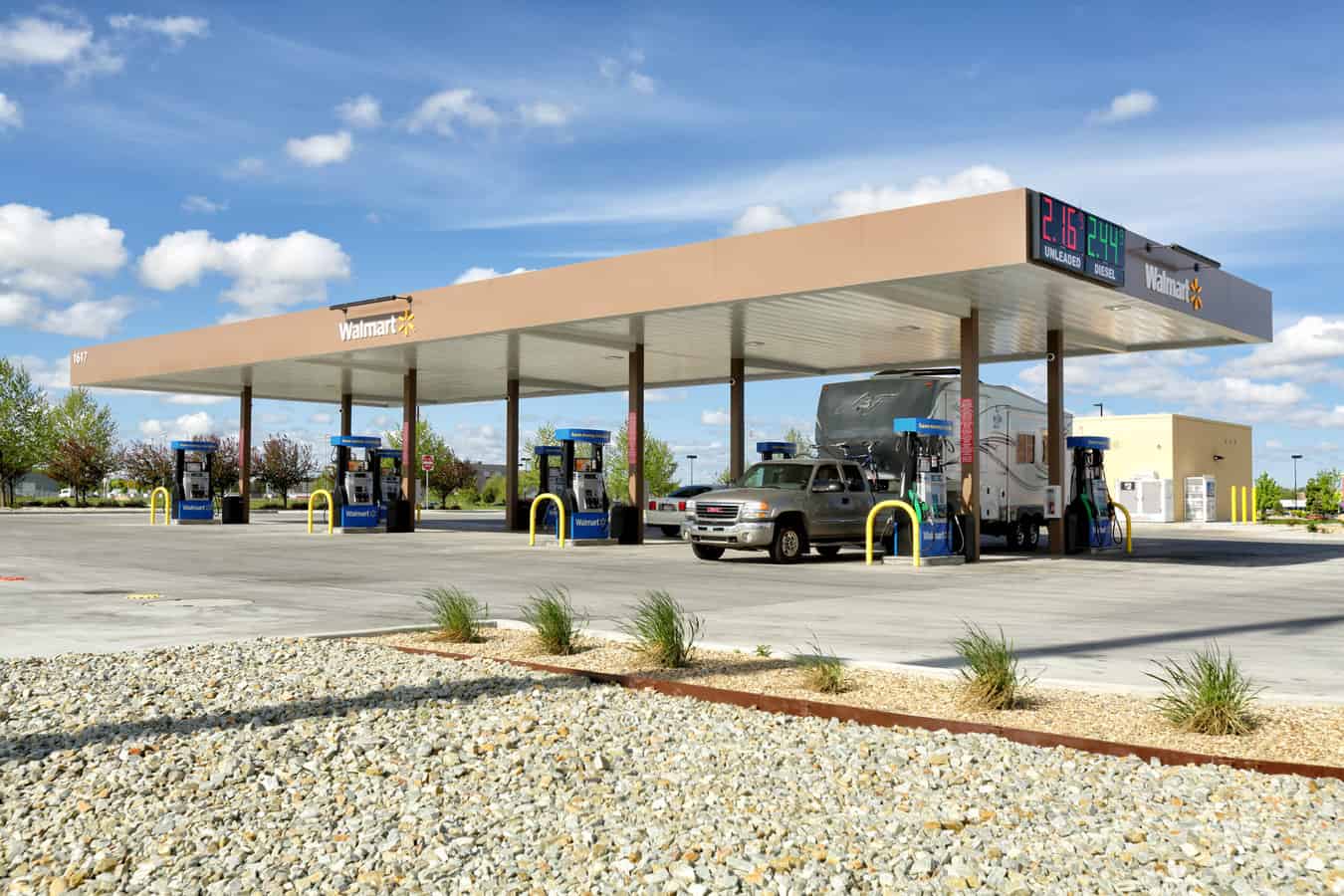
What Is An eBike?
The simplest description of an ebike is a traditional bicycle with electric propulsion, which is supplied from a battery through a motor. This is the main distinction from regular bicycles, but there are many different styles and pros and cons of ebikes.
How much does an ebike cost?
If you enjoy your surroundings from the seat of a classic bicycle, you might find that the vantage point is less exhausting if you’re seated on an ebike. But you should know the pros and cons of ebikes before making the investment. When I say investment, I’m serious, because a good quality ebike could easily cost $2500 to $6000.
The price range for ebikes is from $500 to over $10,000, but spending less than $1500 on an ebike could leave you in the lurch down the road (pun intended). In this market, at least in the mid-price range, you’ll get what you pay for.
I was in a bike shop a few weeks ago and was shocked to learn that you could spend that much on a traditional non-motorized bicycle. Gone are the days of buying a touring bike for a couple hundred dollars. However, the price is not the only consideration when thinking of buying an ebike.
Pedal assist vs full-throttle
These amazing new sports products come in two basic configurations: either a pedal assist ebike or a full-throttle ebike, which is always powered by the onboard battery and motor.
The pedal assist type is exactly what it sounds like. You pedal this type of ebike, but when the effort needed to move forward exceeds your predefined effort level, the motor turns on and assists in propelling you forward. This type of ebike allows you to get the amount of exercise you desire without overtaxing your physical strength on steep inclines.
The power assist variety also has a longer battery life between recharges because you are doing some of the work and not relying completely on the battery for forward propulsion. The full-throttle variety receives 100% of its power from the battery, and because of this, it more closely resembles a moped or motorcycle in its function.

Watts vs Horsepower
Another distinguishing attribute of ebikes is the wattage of any given model. Theoretically, the higher the wattage, the faster and further it will go before the battery needs to be recharged. The typical wattage for ebikes are 250, 500, 750, and 1000.
Generally speaking, the maximum speed for a 750-watt ebike is approximately 20 mph. This is an important distinction for ebikes because most US jurisdictions prohibit ebikes which exceed 20 mph, but there is no universal code for ebike operation. Some states have laws governing the use of ebikes, while other states let individual jurisdictions (cities and counties) determine what is and is not permitted.
Some jurisdictions have maximum wattage restrictions and others use the maximum speed rating for the ebike. Some jurisdictions restrict where they can be ridden and what type of ebike is permissible (pedal assist or full throttle control). As RVers, it will be your responsibility to research the ebike operational laws in all the regions where you will be riding.
eBike wattage
Another issue with ebikes is the measurement expressed in wattage has no universal standard. Most ebike batteries are lithium-ion, but there are other types of batteries used in ebikes from traditional lead-acid to lithium-polymer as well as nickel-cadmium. Unfortunately, every manufacturer defines their own wattage performance, which is not based on a universal standard. How confusing is that?
We accept that one linear foot equals 12 inches, but what if it really meant 10 inches in some cases and 15 inches in other cases? Then the measurement ceases to be useful. This is the problem with the way ebike wattage is used in brochures and sales literature.
Another equally ambiguous term refers to battery life, and it is expressed in Watt hours (Wh). Theoretically, this should define how many hours you could use the battery before it needs to be recharged. Again, your actual experience will depend on many external variables such as weight, speed, terrain, the weight of cargo, and even the surface of the road or path.
Understanding speed and distance rating
Even though ebikes are sold with maximum speed, distance, and battery life estimates as part of their technical specifications, like the mileage sticker on the window of a new car or the number of copies on a new print toner cartridge, you should interpret that information as approximate or ideal performance, not guaranteed actual performance. After all, there are so many variables that will impact the maximum speed, distance, and battery life of an ebike, and that is one of the cons of these new high-tech toys.
The weight of the rider, the weight of the ebike, and the cargo weight, plus the terrain and even the surface of the road and wind conditions will all impact the ebike’s performance. Two identical batteries in two identical ebikes will produce very different outcomes if one rider weighs 125 lbs and another rider weighs 250 lbs. Additionally, a pedal assist ebike battery will last longer than a full-throttle ebike.
All this variability makes shopping for ebikes much more difficult, especially for novice ebike enthusiasts. If you’re going to spend $6,000 on a new RV tech toy, you’ll want to shop and compare models and features, but without standards, it’s extremely hard to compare one ebike to another.

Other pros and cons of ebikes
Other considerations are the construction, aesthetics, weight, foldability, and safety features. Some ebikes are built more like mountain bikes, while others more closely resemble 10-speed touring bikes. Some have been adapted with an extended frame and a low profile to accommodate cargo and a second person. Some ebikes can weigh as little as 20 lbs or as much as 90 lbs, and some only have one gear, while others have as many as 12 gears.
Some ebikes come with removable batteries so you can take extra batteries to extend your range. Others boast comfortable leather seats and safety features such as a headlamp, taillight, and fenders.
Finally, some ebikes have folding handlebars, some are fully foldable, and others have fixed non-folding frames and handlebars. All these different features make each model unique and let RVers find the perfect fit for their recreational needs and hauling capacity.
Know your expectations before shopping for ebikes
There are many unique opportunities for RVers to enter this new recreational niche at various levels of expense and commitment. Each level offers varying degrees of enjoyment, excitement, and resource functionality. If you are shopping for an ebike, do your due diligence; there are differences in construction, weight, wattage, ebike type, foldability, battery life, battery type, portability, speed, distance rating, seat comfort, safety features, etc.
To get the right ebike for you, you’ll need to know what your expectations are for owning and using these new high-tech toys. If you make the right selection to meet your specific needs, you may find yourself enjoying your next outing from the comfort of your ebike, as you effortlessly and silently cruise along a backcountry road or trail, enjoying the surroundings at a comfortable cruising speed of 20 miles per hour.
One of the best parts about RVing is engaging with the community of traveling enthusiasts. iRV2 forums allow folks to chat with other RVers online, and get other perspectives on everything RVing, including products, destinations, RV mods, and much more.
Related articles:
- A Comprehensive Guide To eBikes For RVers
- Save Space With These 5 Folding Bikes For RVers
- JackRabbit Pedal-Free Micro e-Bike Fits Anywhere
Special thanks to the marketing team at Gazelle Bikes for graciously providing the photos for this article.





One add… some e-ikes have both pedal assist and throttle.
The article gives a lot of great info on things you need to know before purchasing an ebike. Here are 2 additional things to consider for RVers : 1) How you will charge the batteries? Do you always have hookups, or do you dry camp? Charging the batteries can require a lot of electricity depending on the batteries and how far they’ve been discharged. A generator may be required to avoid running your house batteries down too far if dry camping without solar. 2.) Temperature extremes can affect battery life. If the temps get down below 40 degrees overnight they need to be warmed back up to room temperature before charging or using them. Inside storage is best in the cold. We had to buy a small space heater for the back of our truck to keep the bikes warm overnight during a cold spell while traveling. This also required us to have electrical hookups.
They should work fine for riding around the campground, but going to the nearest town 10 miles away might be a problem.
Given the prices, a small 50cc scooter costs about the same and is street legal with a much longer range.
Some of the lightest models weigh well under 200#
In most states you don’t even need a M/C license, just your normal driver’s license.
You have to mention, there’s been a a lot of Electric bike accidents, with people over age 60+, falling, breaking arms, ribs, legs and sometimes it can be fatal to elderly person in their 70s or above. Please mention the electric tricycles, they are awesome, very convenient, and harder to turn over.
Hi,
I purchased a ebike before my last trip. It had 12 speeds pedal assist and throttle capabilities. Paid $620 and my friends thought it was great. Bought it to cruise, but oh no my buddies took me mountain biking for the maiden voyage. Granted I hadn’t ridden in 20+ years but it did fine. My point is I didn’t need to spend $2k to enjoy a good ride. The only negative was maybe the weight but for $620 I didn’t expect a world class composite bike.
Fred, what bike did you purchase? What were the specs?
Most excellent description of the choices. I’d like to add some supplemental comments.
Some trails restrict the classification of allowable e-bikes. Our e-bikes have a 20 MPH governor which allows them most any place. Our friend’s e-bike has a 28 MPH governor which is restricted in places. Also to consider is the suspension: both front and rear suspension which is suitable for most any dirt single track and usually comes with knobby tires, or just front suspension for mostly pavement and equipped with smooth road tires. We opted for the full suspension knobby tire version that can go most anywhere – trail or pavement. Whereas the front suspension only smooth tired e-bikes better stay on pavement. A skilled rider might negotiate a hard packed dirt road on pavement tires, but beware. When at home and riding with our touring friends, I put smooth tires on my wife’s e-bike which has opened up a whole new crowd of riding buddies and distances. When we go to the state and national forests, the knobby tires will be re-installed to ride mostly dirt forestry roads. We have lightweight unpowered mountain bikes for any serious single track technical trails.
A big consideration is the weight and how to transport an e-bike. At 60 pounds, my wife cannot pick her e-bike up and place it on a bike rack. She can barely get it into our van. Removing the 10 pound battery helps. Also the carrier must be rated for the weight. A standard bike carrier usually cannot carry two 60 pound e-bikes. And those racks capable of 120 pounds are not inexpensive and are heavy too, so figure that into your budget and your physical limitations.
We have Giant e-bikes: she has the female version and mine is for guys. Each was just shy of $5000. My battery has more watt hours but is interchangeable with her bike, so on really long pavement rides, she uses my battery while I ride my totally human powered bike. We’ve really enjoyed our e-bikes for the short time we have had them.